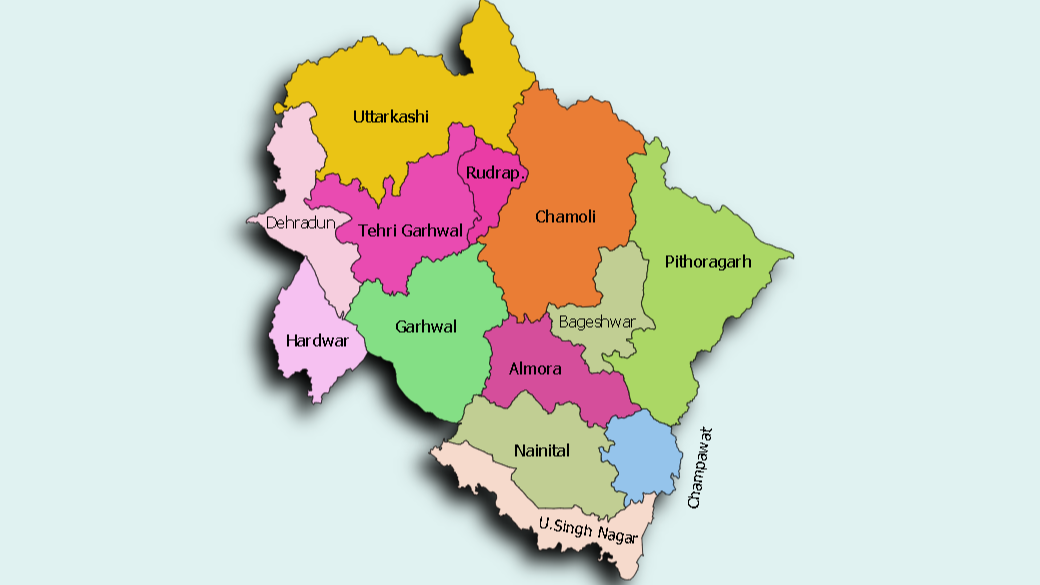Dehradun, the capital of Uttarakhand, is located amidst the majestic Himalayan Mountain ranges. Dehradun stands as one of India’s oldest cities and since November 2000, the provisional capital of the newly created state of Uttarakhand. Brimming with historical significance, cultural richness and natural splendor, Dehradun has earned the moniker ‘Adobe of Drona’ and plays a pivotal role in the region’s administrative, educational and cultural landscape.
Capital of Uttarakhand – Historical Significance
Dehradun’s history dates back centuries, serving as a crucial center for Garhwal rulers before being captured by the British. The city’s name is believed to be derived from ‘dera,’ signifying a temporary adobe or camp, a nod to its historical connection with Guru Ram Rai during the reign of Aurangzeb. Additionally, legends suggest a connection to Guru Dronacharya of Mahabharata fame, who is said to have spent a season in the village of Devara, contributing to the name ‘Dronashram.’
Uttarakhand’s Capital – Educational and Administrative Hub
Dehradun is not only a cultural and historical gem but also a hub for educational and administration. The city houses the headquarters of prestigious national institutes and organizations such as ONGC, Survey of India, Forest Research Institute and Indian Institute of Petroleum. Renowned educational and training institutions like the Indian Military Academy, Rashtriya Indian Military College (RIMC), Indira Gandhi National Forest Academy (IGFNA) and Lal Bahadur Shastri National Academy of Administration (LBSNAA) further contribute to Dehradun’s prominence.
The Capital of Uttarakhand – Tourist Attraction
Beyond its administration and educational prowess, Dehradun captivates visitors with its serene environs, making it a favored tourist destination. Pilgrims, enthusiasts and nature lovers are drawn to the city’s picturesque landscapes. The abundance of special Basmati rice, tea estates and litchi gardens add to the city’s allure, transforming it into a paradise for those seeking a blend of cultural richness and natural beauty.
| Other Important Articles | |
| States and Capitals of India | Capital of Uttar Pradesh |
| Capital of Telangana | Capital of Odisha |
Geographical Details of Dehradun, Uttarakhand’s Capital
Dehradun, situated in the north-west corner of Uttarakhand, shares its boundaries with Uttarkashi to the north, Tehri Garhwal and Pauri-Garhwal to the east, Saharanpur (Uttar Pradesh) to the south and Haridwar to the south-west. The western boundary adjoins the Sirmur (Nahan) district of Himachal Pradesh, with the Tons and Yamuna rivers demarcating the two regions. Dehradun spans between 29 degrees 58’ and 31 degrees 2’ 30” north latitudes and 77 degrees 34’ 45” and 78 degrees 18’ 30” east longitudes. The district covers a total area of 3088 sq. kms, with an altitude of 640 meters (2100 ft.) above sea level.
An Overview of Uttarakhand

- Uttarakhand emerged as a distinct entity after being carved out from Uttar Pradesh.
- The state of Uttarakhand came into existence on the 27th November 2000, marking its established as the 27th state in the Indian Union.
- International borders of Uttarakhand extend to Nepal and Tibet, fostering cross-cultural connections.
- In addition to its international boundaries, Uttarakhand shares its borders with the Indian states of Uttar Pradesh and Himachal Pradesh.
- Uttarakhand boasts abundant forest covers and water resources, showcasing its wealth in natural assets.
- Hindi stands as the official language of Uttarakhand, fostering effective communication and administrative processes.
- Complementing Hindi, Sanskrit holds the status of the second official language in Uttarakhand.
- The linguistic diversity of Uttarakhand is enriched by major regional languages, including Garhwali and Kumaoni, contributing to the cultural tapestry of the state.
Find More General Studies News Here




 Which Country is Known as the Land of Ch...
Which Country is Known as the Land of Ch...
 Which Bird is known as the King of Birds...
Which Bird is known as the King of Birds...
 Which City of Austria is Known as the Ci...
Which City of Austria is Known as the Ci...







